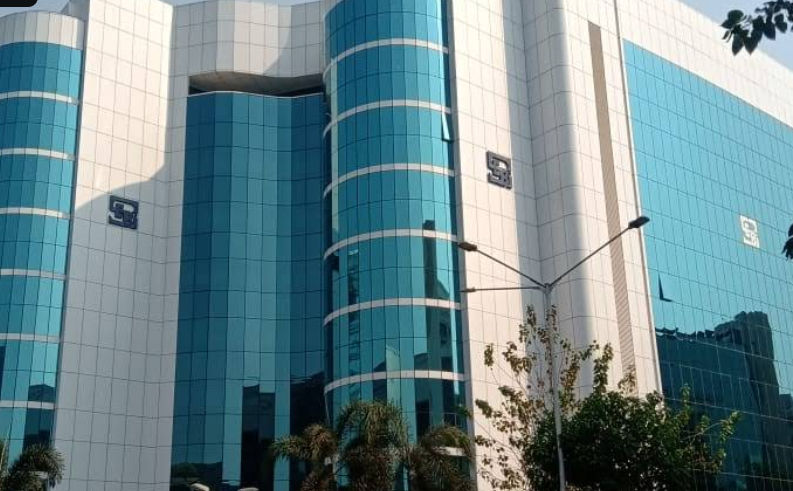
In a significant move that could reshape the landscape of India's IPO market, the Securities and Exchange Board of India (SEBI) has released a consultation paper proposing changes to the allocation structure for large Initial Public Offerings (IPOs), particularly those exceeding ₹5,000 crore in size. While nothing has been finalized yet, the proposals have already sparked intense discussions among market participants—especially retail investors.
Why This Matters for IPO Investors
If you're someone who actively applies for IPOs—whether for long-term holding or quick listing gains—this development directly concerns you. SEBI has not yet implemented any rule changes, but the consultation paper (CP) acts as an official precursor. It outlines proposed changes and invites public feedback before any final decision is taken.
What is a Consultation Paper?
SEBI typically does not implement rules arbitrarily. A structured process is followed where a draft proposal is released in the form of a consultation paper. Stakeholders are then given 1 to 1.5 months to share their views, objections, or suggestions. Based on that feedback, SEBI may revise or finalize the proposed regulations. The current CP focuses on altering IPO norms for large public issues, particularly affecting the retail investor quota.
SME IPOs: The First Major Shakeup
Before diving into the new changes proposed for mainboard IPOs, it's essential to understand the recent regulatory overhaul SEBI introduced in the SME IPO segment.
Lot Size Increased Significantly
Previously, investors could apply for one lot in an SME IPO for around ₹1.25 lakh. Now, the minimum lot size has been raised to over ₹2 lakh. This increase essentially shifts retail investors into the individual investor category, making it harder for those with limited capital to participate.Tougher Allotment Mechanism
Earlier, if 100 investors applied for 100 lots, at least 100 of them could receive 1 lot each. Now, the new system may allot 2 lots per investor, meaning only 50 out of 100 investors might get an allotment, even though the total number of available lots (100) remains unchanged.More Favorable Terms for HNIs
High Net Worth Individuals (HNIs), who earlier applied ₹50 lakh to ₹1 crore under the proportionate allotment method, will now also face a lottery-like system similar to mainboard IPOs. However, applying with just ₹10 lakh now qualifies them for the HNI category, making it more inclusive, yet uncertain.Liquidity Concerns
Another challenge is selling multiple SME lots. Even selling one lot can be difficult due to lower liquidity in this segment. With three or more lots potentially being allotted, selling becomes even more complex.Cap on Premium Pricing
SEBI has also capped the maximum IPO premium to 90% in certain cases, aiming to curb overvaluation practices in the SME space.
New Proposed Rules for Mainboard IPOs
The latest consultation paper now targets mainboard IPOs—the larger issues that list on NSE and BSE. Here’s what’s proposed:
Current Allocation Structure
QIB (Qualified Institutional Buyers): 50%
Retail Investors: 35%
Non-Institutional Investors (including HNIs): 15%
While this is the standard, variations are allowed. For example, in some infrastructure IPOs, retail allocation has gone as high as 40%.
What’s Changing?
SEBI now proposes to reduce the retail investor quota from 35% to 25%, but only for IPOs above ₹5,000 crore. The QIB quota would be increased from 50% to 60%, while the HNI category would remain unchanged at 15%.
Why Is This Being Proposed?
SEBI has several motivations for this change:
Ensuring Stability in Large IPOs
Retail investors often apply for IPOs solely based on Grey Market Premiums (GMPs) and typically sell on listing day to book quick profits. This causes high volatility and instability in newly listed large IPOs.Long-Term Investors Needed
QIBs, unlike retail investors, generally invest with long-term goals in mind. By increasing their quota, SEBI hopes to bring more price stability and confidence in larger IPOs.Retail Under-Subscription in Large Issues
In IPOs sized above ₹5,000 crore, it's observed that the retail quota often remains under-subscribed or sees minimal enthusiasm if GMP is low (like 2–4%). This deters overall IPO performance and market sentiment.Better Price Discovery and Book Building
Larger allocation to QIBs would result in better price discovery and stronger support during the listing phase and post-listing performance.
What Happens Next?
The deadline to respond to SEBI's consultation paper is August 21, 2025.
After this, SEBI will analyze public feedback and may release final guidelines based on consensus or justified regulatory needs.
Final Thoughts: What It Means for Retail Investors
Retail investors have already felt the pinch in SME IPOs with increased lot sizes and tougher allotment systems. Now, with the proposed reduction in mainboard IPO quota, the road ahead could become more challenging.
If implemented, this means:
Lower chances of allotment in high-demand large IPOs
Fewer retail participants due to limited slots
Greater institutional control over large IPO pricing and post-listing stability
However, not all is gloomy. Many large IPOs have still provided strong listing gains—for example, Bajaj Housing Finance, which was a large issue exceeding ₹6,500 crore, gave handsome returns on listing.
The change is aimed more at market stability and healthy participation, rather than excluding retail investors outright. But it does signal a shift in regulatory focus—quality and longevity over short-term gains.
Disclaimer:
The information provided in this blog is for informational and educational purposes only and does not constitute financial, investment, or legal advice. The proposed changes discussed are based on SEBI’s consultation paper and are not final decisions.




